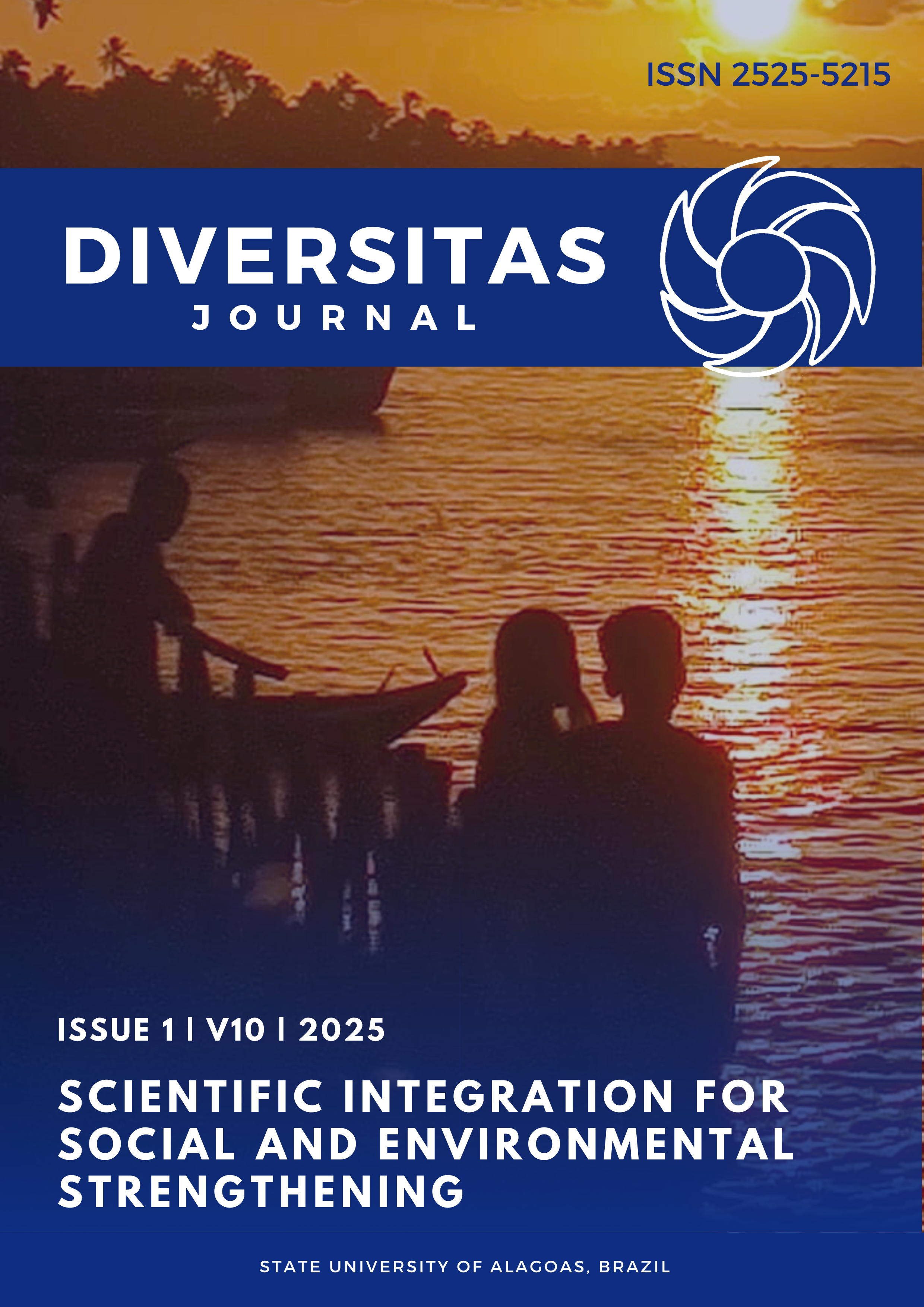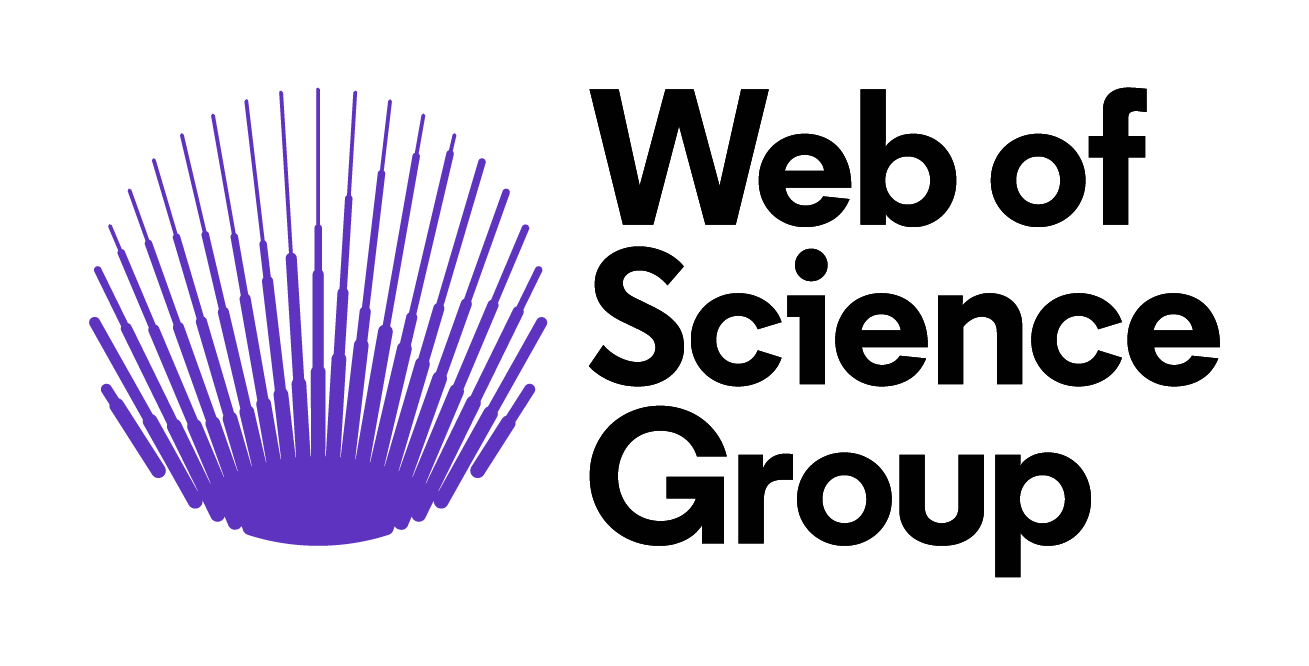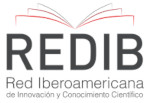Teachers’ Information and Communication Technology Competence: Basis for the Development of Technology Guide for Teaching and Learning
DOI:
https://doi.org/10.48017/dj.v10i1.3259Palabras clave:
ICT competence, technology guide development, teaching and learningResumen
This study investigates teachers' information and communication technology (ICT) competence levels across six dimensions: information and data literacy, communication, and collaboration, digital content creation, safety and security, problem-solving, and analyzing and reflecting. A descriptive-developmental design was used and data were treated using percentages, weighted mean, and cumulative percent techniques. The study includes sixty four (64) primary and higher education teachers in the Province of Masbate. Findings reveal that teachers are competent overall, with strengths in basic browsing, searching, and data filtering but weaknesses in evaluating and managing information and engaging in collaborative online practices. While teachers demonstrate competency in producing digital content and understanding copyright, they need help with advanced formatting and processing complex content. Safety and security showed significant attention, yet deficiencies persist in designing adequate learning resources and problem-solving with ICT tools. A Technology Guide for Teaching and Learning (TGTL) is developed to address these gaps, comprising six modules aligned with ICT competency indicators. Teachers highly accept the TGTL, acknowledging its potential to enhance competence across dimensions. Recommendations for implementation include re-echoing and school-based training, continuous professional development, and revisiting maintenance and operating expenses for specialized workshops. Conclusions underscore the importance of integrated approaches to ICT competency development, particularly in areas of weakness such as problem-solving and collaboration. The TGTL demonstrates the potential to improve teacher competence and can be replicated for broader implementation in primary and higher education settings. This study contributes to the ongoing effort to equip educators with the skills necessary for effective digital teaching and learning.
Métricas
Citas
Albion, P. R., Tondeur, J., Forkosh-Baruch, A., & Peeraer, J. (2015). Teachers' professional development for ICT integration: Towards a reciprocal relationship between research and practice. Education and Information Technologies, 20(4), 655-673.
Aldoobie N 2015. ADDIE model. American International Journal of Contemporary Research, 5(6) : 68-71.
Al Khateeb, A. A. M. (2017). Measuring digital competence and ICT literacy: An exploratory study of In-Service English Language teachers in the context of Saudi Arabia. International Education Studies, 10(12), 38-51.
Amhag, L., Hellstrom, L., & Stigmar, M. (2019). Teacher educators’ use of digital tools and needs for digital competence in higher education. Journal of Digital Learning in Teacher Education. https://doi.org/10.1080/21532974.2019.1646169
Anderson, L. W., Krathwohl, D. R., & Bloom, B. S. (2001). A taxonomy for learning, teaching, and assessing: A revision of Bloom's taxonomy of educational objectives. Longman.
Antonio, A., Probitchado, R. Jr., Ricohermoso, C., Saavedra, A., & De La Rama, J.M., (2020). Gender differences in technological competence among science teachers: Implications. International Journal of Advanced Science and Technology, 29(7), 13257-13268
ASQ, (2022). What is problem solving, https://asq.org/what-is-problem-solving
Azuelo, A., Sariana, L., & Manual, A. (2015). Science teachers’ teaching competencies and their training experience in classroom pedagogical approaches. Liceo Journal of Higher Education Research, 11(1), 1-14. doi: http://dx.doi.org/10.7828/ljher.v11i1.886
Barbour, M. K. (2018). A history of K-12 distance, online, and blended learning worldwide. Handbook of research on K-12 online and blended learning, 21-40.
Belay, M., Khatete, D., & Mugo, B. (2020). Teachers’ attitude towards integrating ICT in classroom instruction in teaching and learning biology in secondary schools in the Southern Region, Eritrea. Journal of Education and Practice, 4(1) 5, 1-18.
Bertea, P. 2009. Measurıng students’ attıtude towards elearnıng. A case study. ELearning and Software for Education, 1(1): 417–424.
Braun, V. & Clarke, V. (2021). Thematic Analysis: A Practical Guide. London: Sage
Butrime, E. (2020). Virtual learning environment and learning change in modern higher education during the COVID-19 coronavirus pandemic: Attitudes of University teachers and students. 9th annual International Conference of Education, Research and Innovation, https://www.researchgate.net/publication/347245965
Byres, E., & Cusimano, J. (2010). Safety and security: Two sides of the same coin. Chemical Processing, March, 18-19.
Calderon, J. (2006). Methods of Research and Thesis Writing (2nd Ed.). Mandaluyong City: National Bookstore.
In Rillo, R. & Alieto, E. (2018). Indirectness markers in Korean and Persian English essays: Implications for teaching writing to EFL learners. English as an International Journal,13(2.2), 165-184.
Caluza, L. J. B., Verecio, R. L., Funcion, D. G. D., Quisumbing, L. A., Gotardo, M. A., Laurente, M. L. P., ... & Marmita, V. (2017). An assessment of ICT competencies of public school teachers: Basis for community extension program. IOSR Journal of Humanities and Social Science, 22(3), 1-13.
Cambridge Dictionary, (n.d.). Acceptability. https://dictionary.cambridge.org/us/dictionary/english/acceptability
Cano-García, F., & García-Martínez, I. (2017). Integrative learning and teacher training: A systematic review of research on an emerging field of study. Educational Research Review, 22, 181-201.
Caraig, G. A., Iyo Jr, G. E., Kelechi, E. S., Caraig, M. E., Caraig, G. A., Iyo, G. N., ... & Caraig, M. E. (2020). Integration of e-learning system through mobile technology. International Journal of Computing Sciences Research, 5(1), 459-474.
Carretero, S., Vuorikari, R., & Punie, Y. (2017). DigCom 2.1: The digital competence framework for citizens, With eight proficiency levels and examples of use. Luxembourg: Publications Office of the European Union, doi:10.2760/38842
Castro, J., Lombrio, C., & Viojan, R. (2019). Level of ICT competence in classroom instruction: Its influence on ENSCIMATH teaching. Institutional Faculty Research, papers.ssrn.com
Chen, L. (2017). Digital storytelling as an innovative pedagogical tool: A systematic literature review. Journal of Educational Technology Development and Exchange, 10(1), 1-14.
Commission on Higher Education (2021). Guidelines on the Implementation of Limited Face-to-Face Classes for all Programs of Higher Education Institutions (HEIs) in Areas Under Alert Level System for COVID-19 Response, No. 2021-004. Retrieved from https://ched.gov.ph/wp-content/uploads/CHED-DOH-JMC-No.-2021-004.pdf
Daling, R. (2017). Secondary school teachers’ competency in information and communication technology. International Journal of Education and Research, 5(11), 117-122.
Davis, F., Bagozzi, R., & Warshaw, P. (1989). User acceptance of computer technology: A comparison of two theoretical models. Management Science, 35(8), 982-1003.
De la Rama, J.M., Sabales, M., Antonio, A. Ricohermoso, C., Torres, J., Devanadera, A., Tulio, C., & Alieto, E. (2020). Virtual teaching as the new norm: Analyzing science teachers’ attitude toward online teaching, technological competence and access. International Journal of Advanced Science and Technology, 29(7), 12705-12715
Degerli, A., Aytekin, C., & Degerli, B. (2015). Analyzing information technology status and networked readiness index in context of diffusion of innovations theory. Procedia-Social and Chenavioral Sciences, 195, 1553-1562. https://doi.org/10.1016/j.sbspro.2015.06.190
Dela Fuente, J. & Biñas, L (2020). Teachers’ competence in information and communications technology (ICT) as educational tool in teaching: An empirical analysis for program intervention. Journal of Research in Education, Science and Technology, 5(2), 61-76
Djumaeva, G.A. (2021). Analysis of the attitude of teachers and students to the distance learning format. International Journal of Innovative Analyses and Emerging Technology, 1(5), 1-3
Drent, M., & Meelissen, M. (2008). Which factors obstruct or stimulate teacher educators to use ICT innovatively?. Computers & Education, 51(1), 187-199.
Ertmer, P. A., Ottenbreit-Leftwich, A. T., Sadik, O., Sendurur, E., & Sendurur, P. (2012). Teacher beliefs and technology integration practices: A critical relationship. Computers & Education, 59(2), 423-435. https://doi.org/10.1016/j.compedu.2012.02.001
Estremera, M. I. 2017. “Acceptability and Quality Level of the Developed Reading Module Entitled ‘Lead to Learn, Save the World’: An Instructional Material Used for SY 2014-2015 to SY 2015-2016.” Journal of Literature, Language and Linguistics, 40, 31-7.
European Commission. (2017). DigComp 2.1: The Digital Competence Framework for Citizens with eight proficiency levels and examples of use. https://ec.europa.eu/jrc/en/digcomp/digital-competence-framework
Fidalgo, P., J. Thormann, O. Kulyk, and J. A. Lencastre. 2020. Students’ perceptions on distance education: A multinational study, International Journal of Educational Technology in Higher Education, 17(1): 18. doi:10.1186/s41239-020-00194-2.
Frey, Bruce. (2018). The SAGE Encyclopedia of Educational Research, Measurement, and Evaluation. 10.4135/9781506326139.
Gavino-Gumba, B. (2010). Economic and social dimensions of rural poverty in the poorest Province of the Philippines. International Journal of Interdisciplinary Social Sciences, 5(6).
Gay, L. (1976). Educational research: competencies for analysis and application. The University of Michigan:
Goktas, Y., Yildirim, S., & Yildirim, Z. (2009). Main barriers and possible enablers of ICT integration into pre-service teacher education programs. Journal of Educational Technology & Society, 12(1), 193-204.
Graham, C. R. (2013). Emerging practice and research in blended learning. In M. G. Moore (Ed.), Handbook of Distance Education, (3rd ed., pp. 333–350). New York: Routledge.
Guillén-Gámez, F. D., & Mayorga-Fernández, M. J. (2020). Identification of variables that predict teachers’ attitudes toward ICT in higher education for teaching and research: A study with regression. Sustainability, 12(4), 1312.
Hai, T. T., Thao, T. T. P., & Tinh, T. T. (2016). Assess ICT competences in teaching of teachers and trainee teachers at highland North Vietnam. Education, 54, 27-98.
Halverson, R. (2009). Digital storytelling in and out of school. Educational Technology, 49(3), 27-32.
Hatlevik, O.E. (2017) Examining the relationship between teachers’ self-efficacy, their digital competence, strategies to evaluate information, and use of ICT at school, Scandinavian Journal of Educational Research, 61(5), 555-567, DOI: 10.1080/00313831.2016.1172501
Hero, J. L., Zulueta, M. C. E., Gloria D. S., Tongol, J. C. L., Cruz, A. C. D., Sagun, S, A, T., Cajurao, F. G. V., & Cabrera, W. C. (2021). Mastering innovations in the lens of Information and Communications Technology (ICT) competence and practices of 21st century Filipino teachers: A comparison among Thailand, Vietnam, and the Philippines. International Journal of Multidisciplinary: Applied Business and Education Research, 2(4): 285 – 295. DOI: 10.11594/ijmaber.02.04.02
Hwa, A.P. (2016). Briefing on ICT competency standards. United Nations APCICT-ESCAP, https://www.unapcict.org/sites/default/files/2018-12/Briefing%20on%20ICT%20Competency%20Standards_FINAL.pdf
Ivaniuk, I & Ovcharuk, O. (2020). The response of Ukranian teachers to COVID-19: Challenges and needs in the use of digital tools for distance learning. Information Technologies and Learning Tools, 77(3), 282-291. DOI: 10.33407/itlt.v77i3.3952
Kağıtçıbaşı, Ç. 1999. Yeni İnsan ve İnsanlar (10. Baskı). Evrim Yayınları.
Kharade, K. & Thakkar, R. (2012). Promoting ICT enhanced constructivist teaching practices among pre-service teachers: A case study. International Journal of Scientific and Research Publications, 2(1), 45-51, http://www.ijsrp.org/ejournal.html
Kim, Y. (2018). The framework of cloud e-learning system for strengthening ICT competence of teachers in Nicaragua. International Journal on Advanced Science Engineering Informational Technology, 8(1), 62-67.
Kim, C., & Kim, M. K. (2017). The effects of digital storytelling on students' creative thinking. Education Sciences, 7(4), 88.
Knezek & Christensen, (2016) Knezek, G., Christensen, R. Extending the will, skill, tool model of technology integration: adding pedagogy as a new model construct. Journal of Computing in Higher Education, 28, 307–325. https://doi.org/10.1007/s12528-016-9120-2
Kocdar, S., Karadeniz, A., & Bozkurt, A. (2019). Digital storytelling as a multicultural learning tool: Empowering global citizens through eTwinning projects. International Journal of Educational Technology in Higher Education, 16(1), 1-18.
Koehler, M. J., Mishra, P., & Cain, W. (2013). What is technological pedagogical content knowledge (TPACK)?. Journal of Education, 193(3), 13–19. doi:10.1177/002205741319300303
Lee, J. H., & Lim, C. P. (2018). An investigation of the impact of integrative learning on teacher creativity and collaboration. Journal of Educational Computing Research, 56(6), 830-849.
Markova, T., Glazkova, I., & Zaborova, E. (2016). Quality issues of online distance learning. Procedia-Social and Behavioral Sciences, 237(2017), 685-691. doi:10.1016/j.sbspro.2017.02.043
Roselle, J., Abellon., Genelyn, R., Fariñas., Ana, Beatriz, D., Soriano., Thelma, E., Rodriguez., Felipe, E., Balaria. (2020). Utilization of Maintenance and other Operating Expenses (MOOE) of Non-Fiscally Autonomous Senior High Schools towards Achieving their Annual Improvement Plan (AIP). International Journal of Advanced engineering, Management and Science, doi: 10.22161/IJAEMS.67.1
Merrill, M. D. (2002). First principles of instruction. Educational Technology Research and Development, 50(3), 43-59.
Miller, G. A. (1956). The magical number seven, plus or minus two: Some limits on our capacity for processing information. Psychological Review, 63(2), 81–97. https://doi.org/10.1037/h0043158
Miguel, F., Robledo, D.A., & Lapada, A. (2020). Teachers’ Covid-19 awareness, distance learning education experience and perceptions towards institutional readiness and challenges. International Journal of Learning, Teaching and Educational Research, 19(6), 127-144. https://doi.org/10.26803/ijlter.19.6.8
Mishra, P., & Koehler, M. J. (2006). Technological pedagogical content knowledge: A framework for teacher knowledge. Teachers college record, 108(6), 1017-1054.
Munna, A. & Kalam, Md A. (2021). Teaching and learning process to enhance teaching effectiveness: A literature review. International Journal of Humanities and Innovation, 4(1), 1-4. https://files.eric.ed.gov/fulltext/ED610428.pdf
Murithi, J., & Yoo, J. E. (2021). Teachers’ use of ICT in implementing the competency-based curriculum in Kenyan public primary schools. Innovation and Education, 3(1), 1-11.
Muslim, A., Yusuf. Y., & Juliana, R. (2018). Perceptions and barriers to ICT use among English teachers in Indonesia. The Journal of Teaching English with Technology, 18(1), 3-23. https://www.ceeol.com/search/article-detail?id=606504
Naila,, Zarina, Waheed,, Ruqia, Mirwan. (2022). Continuous professional development and its impacts on teachers’ pedagogy. Pakistan journal of educational research, doi: 10.52337/pjer.v5i2.528
Nancy, Grover. (2022). Change in the professional environment of in-service teachers after attending training programmes. International Journal of Advanced Research, doi: 10.21474/ijar01/15631
Nativization of English in the Philippines as Seen in a Local Daily - Scientific Figure on ResearchGate. Available from: https://www.researchgate.net/figure/Map-of-the-Philippines-and-Masbate_fig1_303015642 [accessed 20 Feb, 2023]
Ni, A. Y. (2013). Comparing the effectiveness of classroom and online learning: Teaching research methods. Journal of Public Affairs Education,19(2), 199–215.
Niess, M. L. (2016). Digital technology and teacher preparation: The science teacher education partnership. Contemporary Issues in Technology and Teacher Education, 16(4), 487-498.
Obana, J. (2020, March 18). Could educational technology be a „holy grail‟ amid Covid-19 crisis? The Manila Times. Retrieved from https://www.manilatimes.net/2020/03/18/business/
Omar, N. D., Hassan, H., & Atan, H. (2012). Student engagement in online learning: learners attitude toward e-mentoring. Procedia - Social and Behavioral Sciences, 67, 464 – 475.
Oxford Learner’s Dictionary, (n.d.). Profile retrieved from https://www.oxfordlearnersdictionaries.com/us/definition/english/profile_1
Paas, F., Renkl, A., & Sweller, J.(2003). Cognitive load theory and instructional design: Recent developments. Educational Psychologist, 38(1), 1-4.
Petko, D., Prasse, D., & Cantieni, A. (2018). The interplay of school readiness and teacher readiness for educational technology integration: A structural equation model. Computers in the Schools: Interdisciplinary Journal of Practice, Theory, and Applied Research, 35(1), 1-18, DOI: 10.1080/07380569.2018.1428007
Prensky, M. (2008). The 21st-century digital native: Myth and reality. On the Horizon, 16(2), 1-6. https://doi.org/10.1108/10748120810877668
Rubach, C., & Lazarides, R. (2021). Addressing 21st-century digital skills in schools–Development and validation of an instrument to measure teachers' basic ICT competence beliefs. Computers in Human Behavior, https://doi.org/10.1007/s35834-019-00248-0
Semerci, A., & Aydin, M.K. (2018). Examining high school teachers’ attitudes towards ICT use in education. International Journal on Progressive Education, 14(2), 93–105. https://eric.ed.gov/?id=EJ1177301
Seufert, S., Guggemos, J., & Sailer, M. (2021). Technology-related knowledge, skills, and attitudes of pre-and in-service teachers: The current situation and emerging trends. Computers in Human Behavior, 115, 106552.
Severy, L. J. 1974. Prosedures and issues in the measurement of attitudes
Sharma, A., & Naidu, V. R. (2020). A Study on emerging trends to enhance learning experience in higher education institutions. INTED2020 Proceedings, 1, 7391-7396.
Shulman, L. (1987). Knowledge and teaching: Foundations of the new reform. Harvard Educational Review, 57(1), 1-23.
Singh, R. (2013). Collaboration in the cloud: Role of attraction and online collaborative tools in enhancing knowledge creation in virtual environments. Journal of Information & Knowledge Management, 12(04), 1350030-1350031; 1350030-1350112.
Sitzmann, T., Kraiger, K., Stewart, D., & Wisher, R. (2010). The comparative effectiveness of web‐based and classroom instruction: A meta‐analysis. Personnel Psychology, 63(4), 623-664.
Solomon, G., & Schrum, L. (2007). Web 2.0: New tools, new schools. Eugene: International Society for Technology in Education.
Stiggins, R. J., Arter, J. A., Chappuis, J., & Chappuis, S. (2012). Classroom assessment for student learning: Doing it right--using it well. Pearson.
Suleiman, I. I., & Arora, P. (2017). Using digital technologies in problem-based learning: A case study of preservice teachers. Journal of Educational Computing Research, 55(8), 1061-1082.
Taylor, L. K. (2018). Digital citizenship education in teacher education: A call for programmatic reconceptualization. Journal of Digital Learning in Teacher Education, 34(2), 97-104.
Teräs, M., Suoranta, J., Teräs, H., & Curcher, M. (2020). Post-Covid-19 education and education technology ‘solutionism’: A seller’s market. Postdigital Science and Education, 2(3), 863-878.
Terrano, H.J. (2018). Development and effectiveness of a textbook on advanced mathematics for engineering programs. International Journal of Education Sciences, 23(1-3), 717. DOI: 10.31901/24566322.2018/23.1-3.1069
Thurstone, L. L. 1931. The measurement of social attitudes. The Journal of Abnormal and Social Psychology, 26(3), 249–269. doi:10.1037/h0070363.
Tosun, Ö. Ç., & Top, E. (2019). Preservice teachers' perceptions and needs regarding digital citizenship education. Journal of Educational Computing Research, 56(5), 710-734.
Tsai, C. W., Shen, P. D., & Huang, Y. M. (2017). Collaborative project-based learning with social media: An empirical study. Journal of Educational Technology & Society, 20(3), 31-42.
UNESCO (2017). Celebrating Higher Education Teaching Personnel. Retrieved from https://en.unesco.org/news/celebrating-higher-education-teaching-personnel#:~:text=The%20Recommendation%20defines%20higher%2Deducation,community%20at%20large.%E2%80%9D%20Mr.
UNESCO, (2018). UNESCO ICT competency framework, version 3. United Nations Educational, Scientific and Cultural Organization http://en.unesco.org/open-access/terms-use-ccbysa-en
Ventayen, R.J. (2018). Teachers’ readiness in online teaching environment: A case of Department of Education teachers, Journal of Education, Management and Social Sciences, 2(1), 94-106.
Waters, J. K. (2015). Engaging students in global issues: Multimedia, storytelling, and social networking. Journal of Geography, 114(5), 192-201.
Webb, M., & Cox, M. (2004). A Review of pedagogy related to information and communications technology. Technology, Pedagogy and Education, 13(3), 235–286.
Weebly.com. 2020. “Research Assignments - Slovin’s Formula.” Prudence https://prudencexd.weebly.com/index.html.
Wells, K (2017). Collaboration vs. Communication: Why The Difference Matters. Field Service Digital. Retrieved from https://fsd.servicemax.com/2017/11/29/collaboration-vs-communication-the-difference-matters/
Wenrui, Zhu. (2022). Research on School-based Training System for Novice Teachers in Colleges. Journal of Higher Education Research, doi: 10.32629/jher.v3i3.885
Yildirim, S., & Sahan, H. H. (2011). Information and communication technologies in pre-service teacher education: A survey of open and distance education faculty members. Turkish Online Journal of Distance Education, 12(3), 95-109.
Yuldasheva, D. M. (2021, January). Methods in teaching english for special purposes esp at instutue of textile and light industry. In Euro-Asia Conferences, 1(1), 17-21
Descargas
Publicado
Cómo citar
Número
Sección
Licencia
Derechos de autor 2025 Alvin Mahawan, Melinda De Guzman

Esta obra está bajo una licencia internacional Creative Commons Atribución 4.0.
O periodico Diversitas Journal expressa que os artigos são de unica responsabilidade dos Autores, conhecedores da legislação Brasileira e internacional. Os artigos são revisados pelos pares e devem ter o cuidado de avisar da possível incidencia de plagiarismo. Contudo o plagio é uma ação incontestavel dos autores. A Diversitas Journal não publicará artigos com indicios de Plagiarismos. Artigos com plagios serão tratados em conformidade com os procedimentos de plagiarismo COPE.
A violação dos direitos autorais constitui crime, previsto no artigo 184, do Código Penal Brasileiro:
“Art. 184 Violar direitos de autor e os que lhe são conexos: Pena – detenção, de 3 (três) meses a 1 (um) ano, ou multa. § 1o Se a violação consistir em reprodução total ou parcial, com intuito de lucro direto ou indireto, por qualquer meio ou processo, de obra intelectual, interpretação, execução ou fonograma, sem autorização expressa do autor, do artista intérprete ou executante, do produtor, conforme o caso, ou de quem os represente: Pena – reclusão, de 2 (dois) a 4 (quatro) anos, e multa.”


















